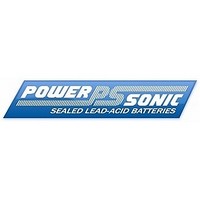PG-12V35 FR Power-Sonic, PG-12V35 FR Datasheet - Page 7

PG-12V35 FR
Manufacturer Part Number
PG-12V35 FR
Description
Sealed Lead Acid Battery 12V 35 Amp Hour Long Life
Manufacturer
Power-Sonic
Datasheet
1.PG-12V35_FR.pdf
(8 pages)
Specifications of PG-12V35 FR
Output Voltage
12 V
Figure 8: Charging characteristics in stand-by mode
Figure 9: Charging characteristics in cycle charge mode
Supplemental Boost Charge
Batteries which have been in storage for extended periods of
time will lose capacity due to their self-discharge characteristics.
To restore full capacity and/or ensure that permanent capacity
loss does not occur, a properly timed constant voltage type
‘boost’ charge is recommended. For storage temperatures of
68-86°F (20-30°C) such top-off charges should be applied
every 6 months, at higher ambients, every 3 months. Avoid
storage temperatures above 86°F (30°C), wherever possible.
Cyclic Applications
Cyclic use requires a fast charge time and protection against
over-charge and over-discharge. Charge voltage should be
2.45 ± 0.05 V/cell at 77°F (25°C). Initial current should be
limited to 0.2C.
Charge
Volume
120
100
Figure 8: Charging characteristics in float charge mode
Charge
Volume
120
100
Figure 9: Charging characteristics in cycle charge mode
80
60
40
20
80
60
40
20
%
%
0.08C
0.06C
0.04C
0.02C
0.08C
0.06C
0.04C
0.02C
0.1C
0.1C
Charging
Charging
Current
Current
(A)
(A)
0C
0C
(V/cell)
(V/cell)
Charged
Charged
Voltage
Voltage
2.4
2.3
2.2
2.1
2.0
2.5
2.4
2.3
2.2
2.1
0
0
Charge at 0.1C Amp initial charging current
and 2.35V/Cell Constant Voltage at 20°C
Charge at 0.1C Amp initial charging current
and 2.45V/Cell Constant Voltage at 20°C
4
4
8
8
12
12
16
16
Charged Volume
Charged Volume
20
20
24
24
28
28
Charge Voltage
(Constant 2.35V/cell)
Charging Current
(Initial at 0.1C Amp)
Charge Voltage
(Constant 2.45V/cell)
Charging Current
(Initial at 0.1C Amp)
After 50%
Discharge
After 100%
Discharge
After 50%
Discharge
After 100%
Discharge
Temperature Compensation
Power-Sonic batteries perform well both at low
and high temperatures. At low temperatures,
however, charge efficiency is reduced; at
temperatures above 113°F (45°C), charge
efficiency increases so rapidly that there is
a danger of thermal runaway if temperature
compensation is not precise.
The effect of temperature on charge voltage is
less critical in float applications than in cyclic
use, where relatively high charge currents are
applied for the purpose of short recharge times.
Temperature effects should definitely be
considered when designing or selecting a
charging system. Temperature compensation
is desirable in the charging circuit, especially
when operating outside the range of 41-95°F
(5-35°C). The temperature coefficient is -2mV/
cell/ºC below 68°F (20°C) in float use and
-6mV/cell/ ºC below 68°F (20°C) in cyclic use.
For higher temperatures the charge voltage
should be correspondingly decreased.
-40°F (-40°C)
-4°F (-20°C)
14°F (-10°C)
32°F (0°C)
50°F (10°C)
68°F (20°C)
77°F (25°C)
86°F (30°C)
104°F (40°C)
122°F (50°C)
Temperature Cyclic Use (V)
Table 2: Recommended charge voltages for
different temperatures.
PG-Series Batteries
2.85 – 2.95
2.67 – 2.77
2.55 – 2.65
2.49 – 2.59
2.43 – 2.53
2.40 – 2.50
2.25 – 2.35
2.61 – 2.71
2.37 – 2.47
2.31 – 2.41
Float Use (V)
2.38 – 2.43
2.34 – 2.39
2.30 – 2.35
2.28 – 2.33
2.25 – 2.30
2.24 – 2.29
2.22 – 2.27
2.20 – 2.25
2.32 – 2.37
2.26 – 2.31






















